Discover 15 hidden attractions, cool sights, and unusual things to do in Ellicott City (United States). Don't miss out on these must-see attractions: Lake Centennial, Shrine of St. Anthony, and Clark's Elioak Farm. Also, be sure to include St. Luke's African Methodist Episcopal Church in your itinerary.
Below, you can find the list of the most amazing places you should visit in Ellicott City (Maryland).
Table of Contents
Lake Centennial

Reservoir in Maryland. Centennial Lake is a man-made 54-acre reservoir, in a 325-acre park in Howard County, Maryland, near Columbia, Maryland and Clarksville, known as Centennial Park. It was created by damming the Centennial Branch of the Little Patuxent River. The lake and the park feature a dam, a wildlife area, a walking trail, boating, fishing, and other recreational activities. The park is owned by the Howard County Department of Recreation and Parks.
The lake is used by the county and state for the conservation of various types of fish, such as trout and bass, with fishing restrictions implemented, though an overabundance has resulted in restrictions being lifted at times. Currently, normal non-tidal Maryland Department of Natural Resources fishing regulations apply.[1]
Shrine of St. Anthony

Shrine in Howard County, Maryland. The Shrine of St. Anthony is a Roman Catholic shrine honoring St. Anthony of Padua. The shrine is located within the St. Joseph Cupertino Friary in Ellicott City, Maryland, USA. The shrine is a ministry of the Conventual Franciscan Friars, Our Lady of the Angels Province, USA.
The friary covers 20,194 sq ft (1,876.1 m2) on 320 acres (1.3 km2; 0.50 sq mi) of hills and woodland.
The chapel which houses the relic of St. Anthony is open to the public during published visiting hours. Mass is offered at noon daily throughout the year. The shrine also offers the Sacrament of Reconciliation, spiritual direction, and days of prayer.
For prayer and solitude the grounds around the friary offers seven trails and a Lourdes grotto. In 2010 an outdoor shrine to St. Maximilian Kolbe was added to the garden. It features a statue of Maximilian Kolbe that was blessed by Pope John Paul II on the day Maximilian Kolbe was canonized.
The historic Manor House is open to the public during posted hours on the Sundays in October until the first Sunday of November. It features two heritage rooms and a traveling art exhibit. In 2008 it displayed watercolor paintings by Fr. Gerry Waterman, OFM Conv. and poetry by Fr. Gary Johnson, OFM Conv. The building was listed on the National Register of Historic Places in 2014.[2]
Address: 12290 Folly Quarter Rd, 21042-1425 Ellicott City
Clark's Elioak Farm
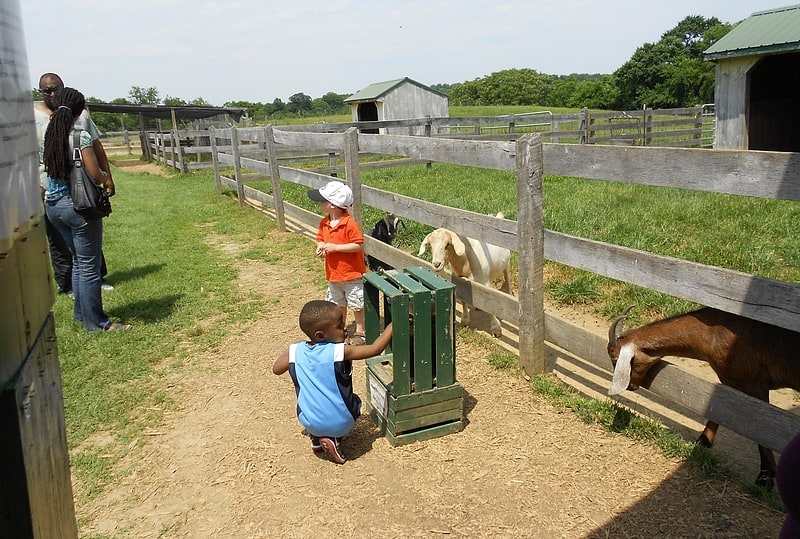
Farm in Ellicott City, Maryland. Clark's Elioak Farm, located along Maryland Route 108 in Howard County, Maryland, is a historic farm covering 540 acres. All of the acreage is part of county or state farmland protection programs, barring use of the property for non-farm development. The Clarks, a family with a tradition of farming in Maryland spanning seven generations, have owned the Elioak farm since 1927.
The name, Elioak, refers to a type of silty clay loam common to the slopes and summits of hills in the northern portion of the Piedmont Plateau. Elioak soil is deep, well-drained, and moderately permeable, making it suitable for apple orchards. Elioak was also listed as a former turn of the century Howard County postal village.
In recent years, the Elioak Farm has become a petting zoo and the venue for restoration of the former Enchanted Forest.[3]
Address: 10500 Clarksville Pike, 21042 Ellicott City (Ellicott City)
St. Luke's African Methodist Episcopal Church
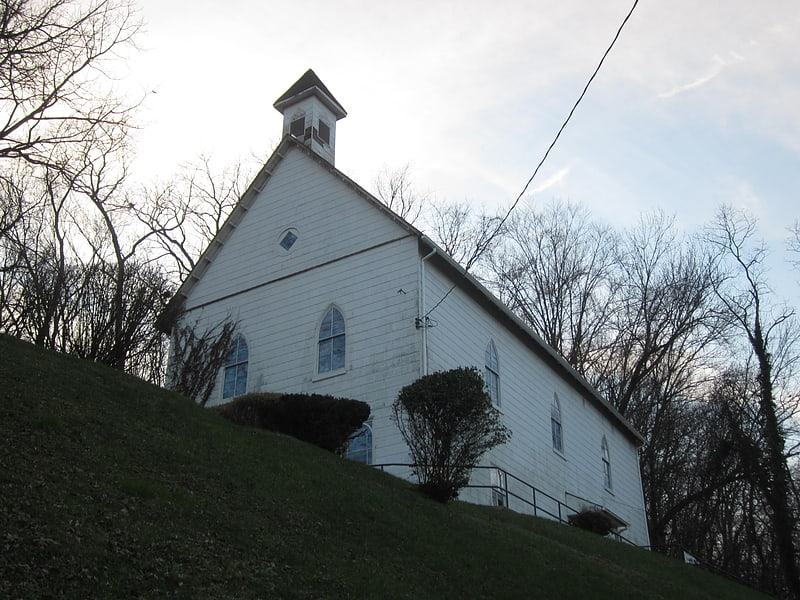
St. Luke African Methodist Episcopal Church, is a historic African Methodist Episcopal Church located at 8435 Main Street in Ellicott City, Maryland.
The building was constructed in 1889.[4]
Patapsco Female Institute
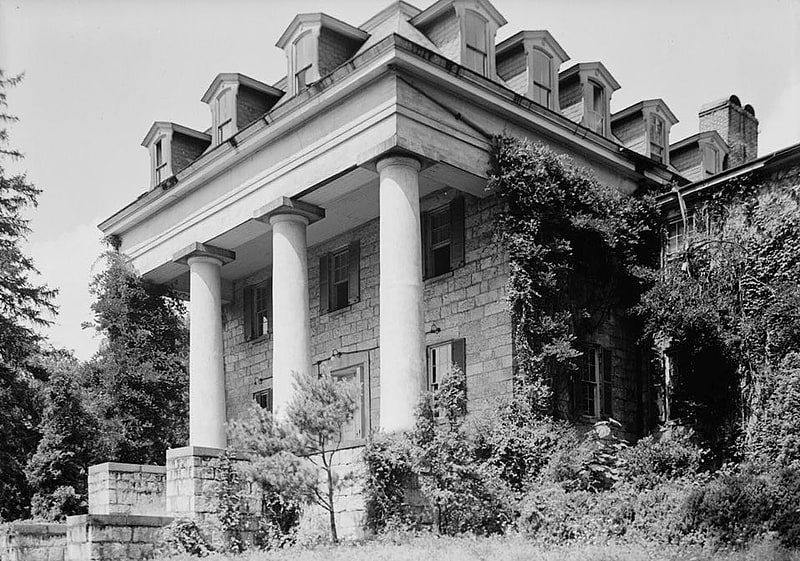
Historical place in Ellicott City, Maryland. Patapsco Female Institute is a former girls' boarding school, now a partially rebuilt historical site, located on Church Road in Ellicott City, Maryland, United States. The grounds are home to popular outdoor theatrical performances by The Chesapeake Shakespeare Company. In the 1930s the Institute was also known as "Warwick".[5]
Address: 3655 Church Road, Ellicott City (Ellicott City)
Howard County Courthouse

County court in Ellicott City, Maryland. The Howard County Courthouse is a former Courthouse building in Ellicott City, Maryland that now houses the Orphan's Court. A stone house on main street served as a temporary courthouse during construction from 1840-1843. The first structure remained in use until the building was lost in the collapse of a culvert in the 2018 Ellicott City Flood. The second courthouse was started with property that was purchased from Deborah Disney. The $24,000 granite structure designed by Charles Timanus started construction in 1840 taking three years to build. It was situated on a steep hill once named Capitoline Hill It also went by the nickname "Mt. Misery". The heavy granite block construction was said "should continue in service for centuries" by local historian Charles Stein in 1972. Howard County government chose to cease operations as a courthouse in July 2021 with a new public private partnership building in Columbia, Maryland.[6]
Address: 8360 Court Avenue, Ellicott City (Ellicott City)
Centennial Park
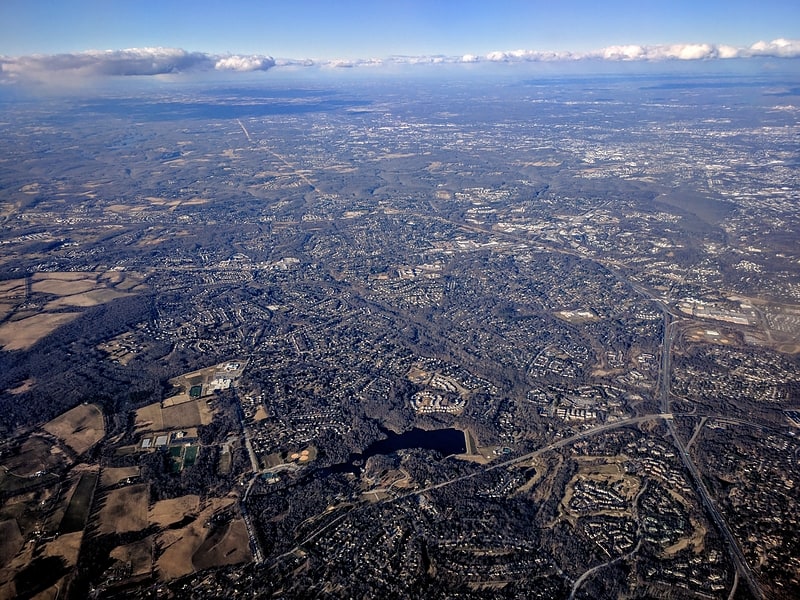
Park in Howard County, Maryland. Centennial Park is a Howard County Department of Recreation & Parks' public park located in Ellicott City, Maryland. It surrounds Centennial Lake, covering an area of 337 acres.
Traveling around the lake is a 2.4-mile paved trail loop. Boat rentals are available during certain months of the year, and a boat ramp is available to the public. Fishing is permitted in the lake, but hunting, firearms, swimming, sailboarding, wind surfing, stand up paddleboarding, and inner tubing are all prohibited. Pets are permitted in the park except for in picnic pavilions, playgrounds, and sports areas. According to Howard County law, pet owners are required to clean up any and all waste their pets produce. In order to keep the park clean, plastic bag dispensers are located around the park. The Howard County leash law is enforced.
The lake, field, wooded areas and wetlands that make up Centennial Park are home to abundant wildlife. A buoy line restricts access to a portion of the lake reserved as a Wildlife Area, providing a safe spawning area for fish and nesting sites for birds.
The loop around the lake is suitable for running, walking, and biking. There are several benches along the loop and pavilions located nearby. There are also water fountains for public convenience, including water fountains for dogs. The first water fountain for dogs was recently added as part of the Water Fountain Donation Program. The fountain was donated in 2017 by the O'Brien family in remembrance of their family dog, Phoenix. The fountain also includes a bottle filler station, in compliance with the program's initiative to reduce the use of plastic water bottles.
There are four areas of Centennial Park, each with its own entrance:
10000 Route 108 (Main/South), Ellicott City, MD 21042
4800 Woodland Road (East), Ellicott City, MD 21042
4651 Centennial Lane (West), Ellicott City, MD 21042
9801 Old Annapolis Road (North), Ellicott City, MD 21042
Phone: 410-313-7271 or 410-313-7256 Boat Rental Dock: 410-313-7303[7]
Address: 10000 MD-108 Ellicott City, MD 21042, Ellicott City (Ellicott City)
The ClayGround Studio & Gallery
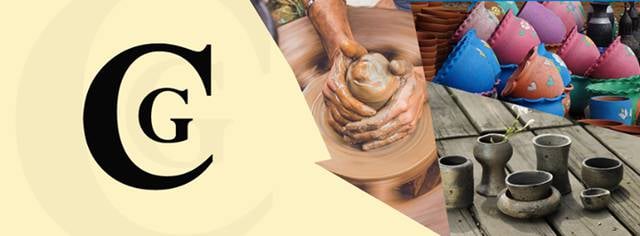
Museum
Address: 3715 Old Columbia Pike, Ellicott City (Ellicott City)
St. John's Episcopal Church
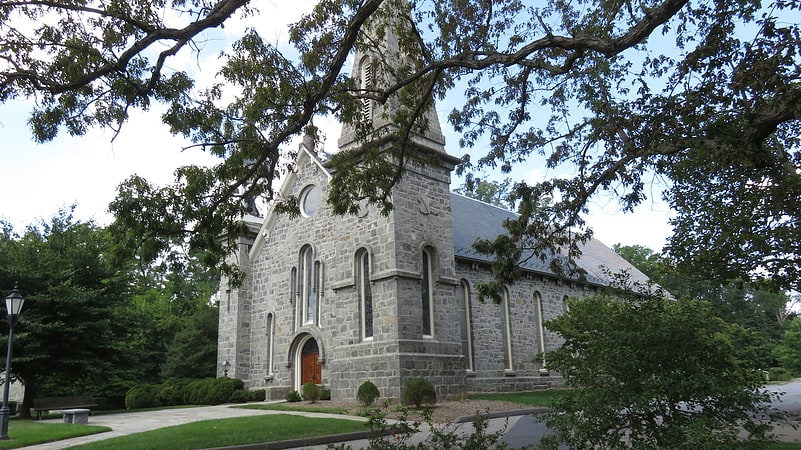
Episcopal church in Ellicott City, Maryland. St. John's Episcopal Church is located in Ellicott City in Howard County, Maryland, United States.
The church stands on a land grant originally patented as "Three Brothers". A section of the land owned by Caleb Dorsey was donated for the church. The building was erected out of local granite in 1823. The church was designed by architect Norris G. Starkweather, who also designed White Hall, Temora, and First Presbyterian Church and Manse. Dr. Charles Worthington Dorsey and George Howard oversaw the construction. The rectory was built in 1940.[8]
Address: 9120 Frederick Rd, 21042-3978 Ellicott City (Ellicott City)
HorseSpirit Arts Gallery
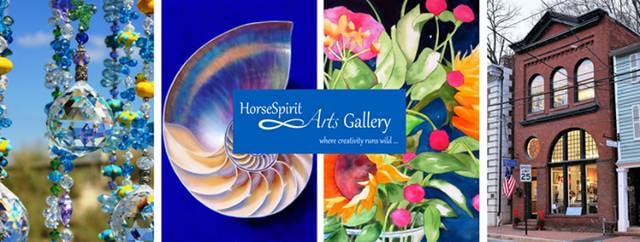
Art gallery, Shopping, Museum
Address: 8090 Main St, 21043-4617 Ellicott City (Ellicott City)
Ellicott City Historic District
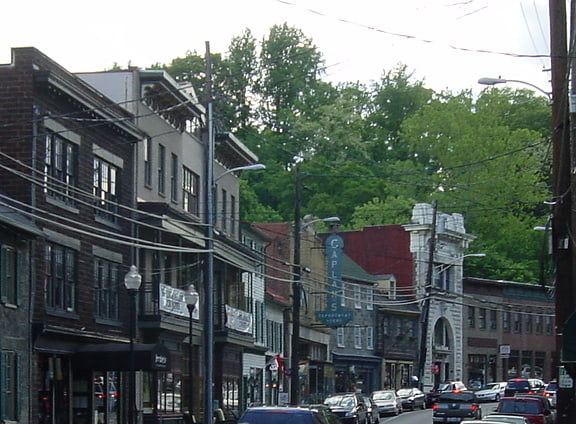
Historical landmark in Ellicott City, Maryland. Ellicott City Historic District is a national historic district in Ellicott City, Howard County, Maryland. The Ellicott City Station is a National Historic Landmark located within the district. The district encompasses a predominantly 19th century mill town whose origins date to 1772, including more than 200 18th- and 19th-century buildings. It was listed on the National Register of Historic Places in 1978. The 2016 Maryland flood severely impacted the historic district on July 30, 2016, as did another flood on May 27, 2018.
It includes the Saint Paul Catholic Church, a church where Babe Ruth got married.[9]
Doughoregan Manor
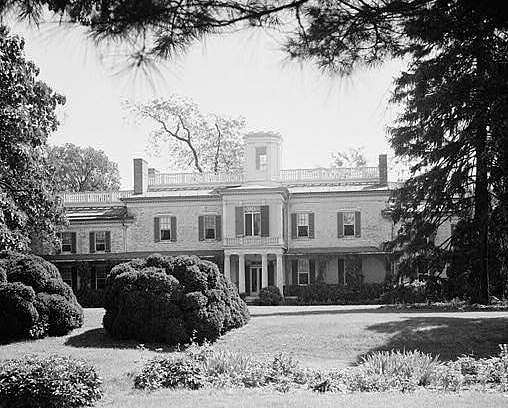
Historical landmark in Howard County, Maryland. Doughoregan Manor is a plantation house and estate located on Manor Lane west of Ellicott City, Maryland, United States. Established in the early 18th century as the seat of Maryland's prominent Carroll family, it was home to Charles Carroll, a signer of the United States Declaration of Independence, during the late 18th century. A portion of the estate, including the main house, was designated a National Historic Landmark on November 11, 1971. It remains in the Carroll family and is not open to the public.[10]
Mt Ida
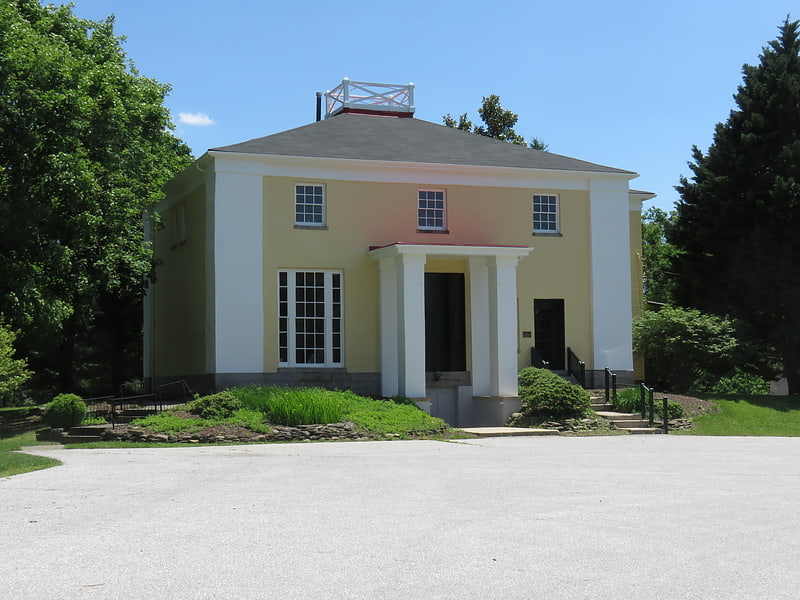
Building in Ellicott City, Maryland. Mt Ida is a historic home in Ellicott City, Howard County, Maryland. Mt. Ida was built for William Ellicott, grandson of one of the city's founding brothers, Andrew Ellicott in 1828. It was built by Charles Timanus, who was also the principal builder of the neighboring Patapsco Female Institute and the Howard County Courthouse. Judge John Snowden Tyson and family lived at the residence from the 1850s, with his daughter Ida Tyson, for whom the mansion is now named, remaining in the house until the age of 90 in the 1920s. Ownership passed hands again to John Ward Wilson, then the influential Clark Family Commissioner Charles E. Miller attempted to rezone the property to convert the mansion into office buildings in 1972. As of 2013, the mansion was owned by the Miller Land Company.[11]
Mount Gilboa Chapel
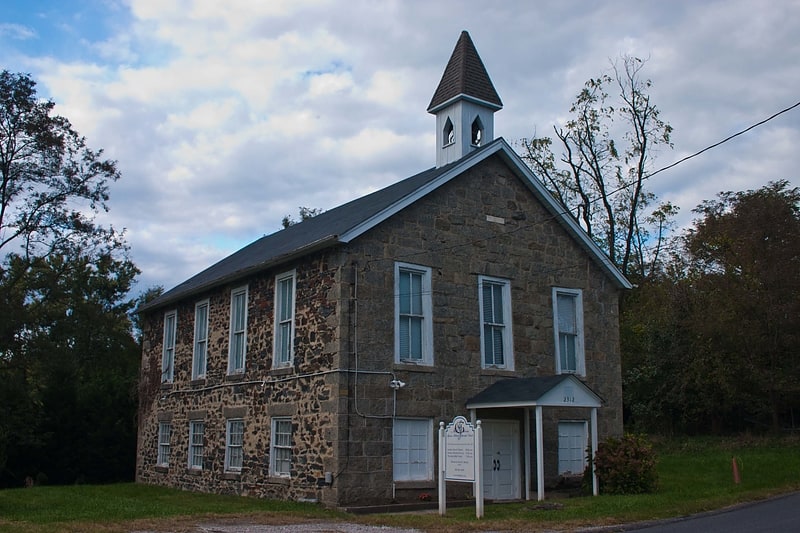
Methodist church in Catonsville, Maryland. Mount Gilboa Chapel is a historic African Methodist Episcopal Church located in Oella, Baltimore County, Maryland. It is a small stone church measuring 28 feet by 42 feet, built about 1859 by free African Americans. The front façade is ashlar masonry, but the sides and rear are of rubble.[12]
Bethesda
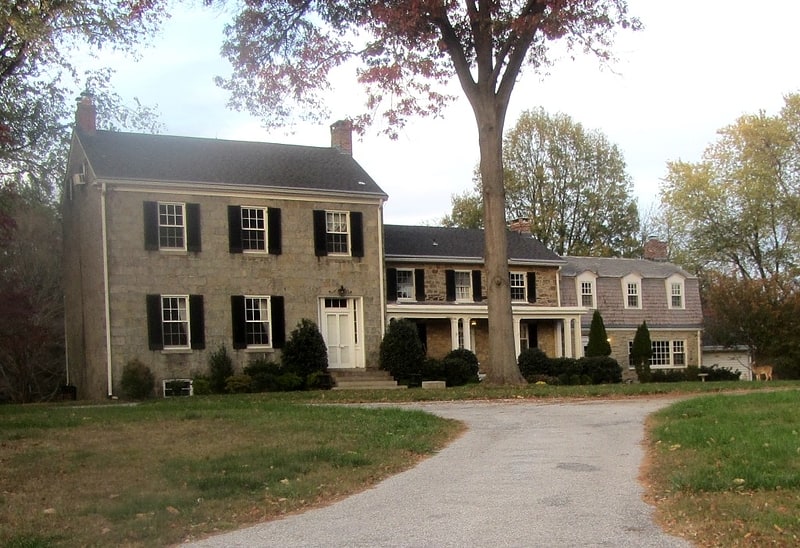
Bethesda is located in Ellicott City, Maryland within Howard County, Maryland, United States. The home is sometimes mistakenly referred to as "Dower House" because a small dower house exists on the property. A "dower" is a widow's share for life of her husband's estate, so a dower house is where a widowed mother would live when her son and his family inherited and moved into the main house.
The foundation of the original house was found using ground penetrating radar to the west of the existing structure. The center portion of the existing house is the oldest; dendrochronology revealed that the trees for the wood in that portion of the house were felled the winter of 1827–1828. Dendrochronology also revealed that the large granite section of the house to the west was added in 1841. The east section was added in 1960 by owner John M. DeBoy. While the house looks wide from the street, it is only one room deep. Outbuildings include a smoke house, a carriage house, and the stone "Dower House" which may have been built in the early 1830s to serve as a summer kitchen.
Bethesda rests on a collection of surveyed properties totaling 1000 acres named "Long Reach", "Chews Resolution Manor", "Search Enlarged", "Search", and "Dorsey's Search" (448 Acres). The land grant was given to Maj Edward Dorsey (1646–1705) in 1682. When Edward Dorsey died, he willed the land to his nephew, Caleb Dorsey of "Belmont" in Elkridge, Maryland. Caleb gave the land to his daughter, Mary, when she married Michael Pue, an Irish doctor. They are the first people known to live on the property, and they lived there in 1790 when the newly formed United States of America conducted its first tax assessment. In 1769, the "Bethesda Old Place Farm" home was expanded on the property and run as a tobacco-producing plantation with 26 slave workers. Two successive generations of Pues also lived there. The property was struck by a tornado in 1858, and stayed in the Pue family until 1859. It was purchased by Thomas Lishear, a sea captain. He had three daughters who never married, and they lived in the house until their deaths. The house was later owned by Dr. George B. Sybert. By 1943, the property had been subdivided to 237 remaining acres. In 1954, the Columbia Hills Corporation developed the land leaving just 8.3 acres surrounding the house. By 1965, the land was subdivided down to three acres. Howard Research and Development purchased most of the original Long Reach property between 1963 and 1966 for the development of Columbia.[13]